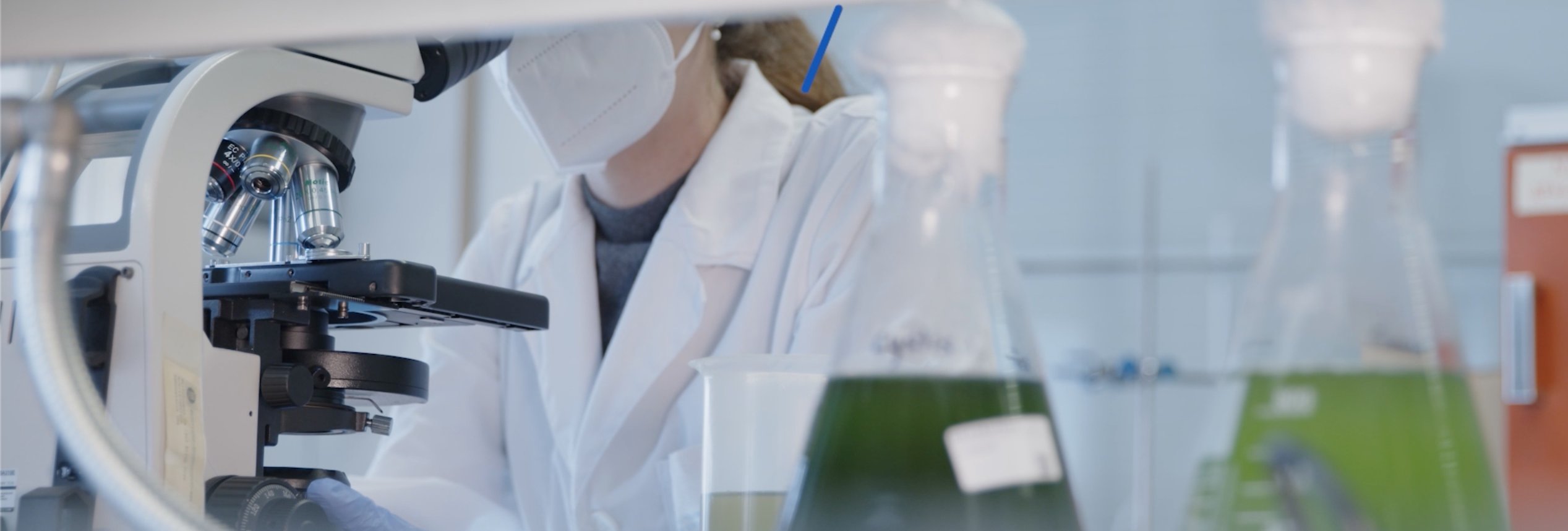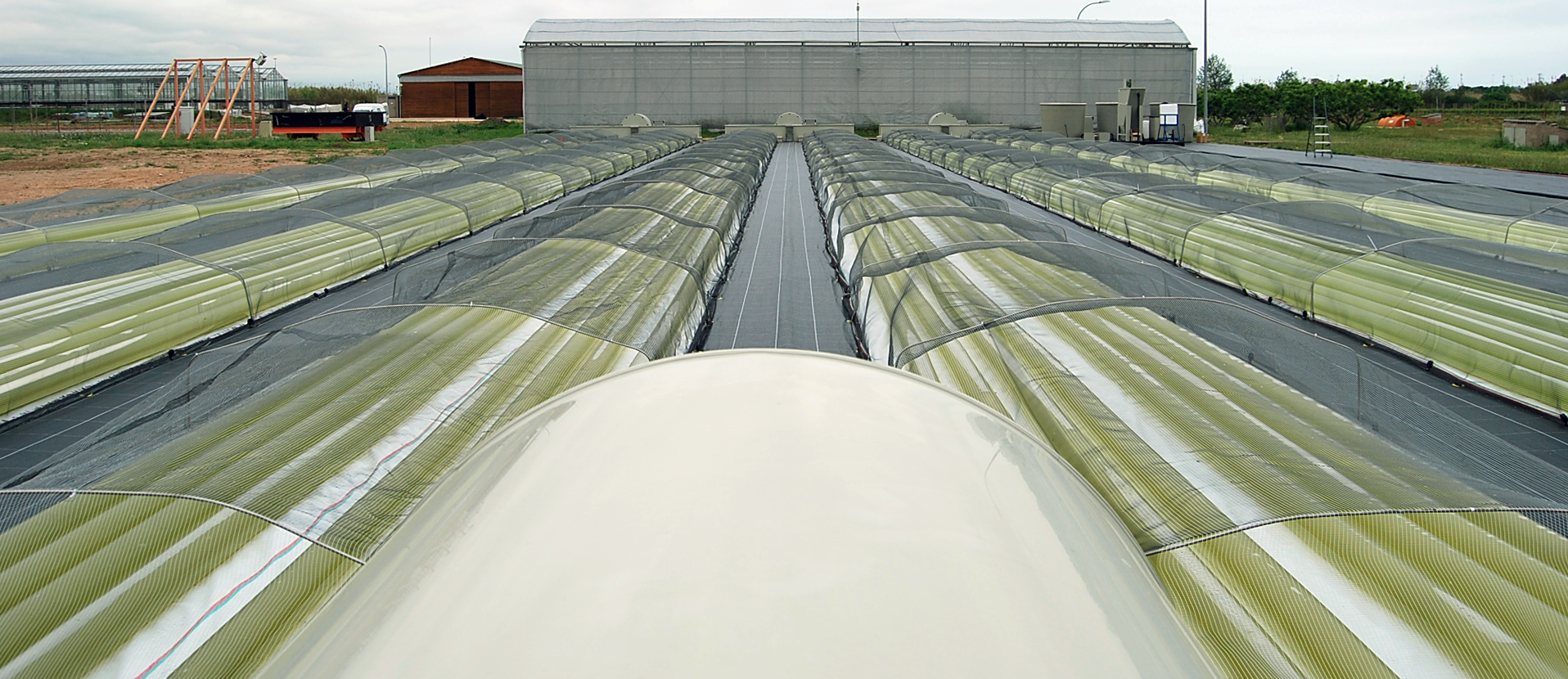Research

Research
Research activities of GEMMA have covered a wide range of aspects, including: the influence of design parameters on the removal of pollutants from wastewater and sludge, pollutants degradation pathways, micropollutants and emerging pollutants removal in natural wastewater treatment systems, the role of microfauna in decontamination processes, biogas production in low-cost anaerobic digesters, greenhouse gases emissions from wastewater and sludge treatment facilities, economic and environmental assessment of biotechnologies and bioprocess modeling.
Research Topics

We study natural systems for wastewater and sludge treatment. These sustainable technologies and low-cost bioprocesses do not require energy for operation. They include ecotechnologies like waste stabilization ponds and constructed wetlands. The main purpose of our research is to understand the mechanisms of pollutants removal in order to improve the design, construction and operation of these systems. By combining fundamental and applied research, we look at the following topics: hydraulic and hydrodynamic aspects, design parameters, remote control systems, pollutant removal mechanisms, nutrients and emerging pollutants removal, greenhouse gas emissions, life cycle analysis and economic evaluation. Sludge treatment in reed beds represents a novel alternative to conventional sludge treatment, minimizing the environmental impact of sludge management with a low-cost technology.

This research topic combines wastewater treatment and bioenergy production (energy from wastewater). Wastewater treatment occurs by means of algae biomass which is subsequently harvested for biogas generation in anaerobic digesters. Microalgae grow by assimilation of inorganic carbon generated through heterotrophic degradation of organic matter in wastewater, carried out by bacteria using oxygen released through algal photosynthesis. The anaerobic digestion of microalgae to produce biogas is a way of recovering the energy contained in wastewater. Biofuel generation from microalgae grown in wastewater is more sustainable since algae can uptake nutrients from wastewater, avoiding fertilizers and water consumption. Besides, the high lipids content of microalgae can improve the methane production compared to conventional sludge digestion. Biofuel generation in this type of system can reduce greenhouse gas emissions from conventional fossil fuel combustion. The bottle neck of this approach is biomass harvesting from the mixed liquor and the hydrolysis of microalgae cell walls, which require further investigation. Our research is focused on the cultivation of microalgae in experimental high rate algal ponds and photobioreactors, biomass harvesting and anaerobic digestion to produce biogas.

Low-cost anaerobic digesters can replace traditional biomass resources for cooking in rural communities of developing countries, improving the living conditions of rural households and protecting the environment. In the context of self-sufficient farming, the biodigester is used to treat organic wastes, producing an organic fertilizer that can enhance crop yields, and biogas that can be used for cooking replacing wood or fossil fuels. Our research aims at designing and implementing low-cost tubular digesters in rural Andean communities. As members of the Latin America and Caribean Biodigesters Network (RedBioLAC), we collaborate with other member institutions.

This research topic includes basic and technical aspects of water reuse and recycling, giving special attention to disinfection and economic evaluation of projects. The main purpose of the topic is defining suitable technical and economic criteria for recycled water for its use in urban, rural and industrial sectors. The research carried out includes: water resources planning, reliability in recycling processes, risk analysis, disinfection byproducts, removal of emerging pollutants.

Constructed wetlands are a reliable alternative and low cost technologies for wastewater treatment. Moreover, microbial fuel cells represent a novel technology that allows the production of energy from the electrons remaining in the reduced organic matter present in wastewater. In constructed wetlands redox gradients are sufficiently marked as to implement microbial fuel cells to produce electricity during wastewater treatment. In addition, microbial fuel cells implementation in constructed wetlands, not only may produce electricity for wastewater treatment, but also reduce greenhouse gas emissions. The main aim of the research topic is to quantify the potential of this technology and optimize the design criteria and operation of constructed wetlands.

Phosphorus has an important economical value for humans, specially within the domain of agriculture where it is used as fertilizer. As a consequence of the high fertilizer production worldwide, phosphorus reserves are rapidly approaching to a threshold where mine extraction will be compromised (either because of natural resources will be depleted or because extraction will be no longer economically feasible). Moreover, phosphorus in wastewater has been so far considered to be a problem, whereas it should be considered as a potential source susceptible to be targeted by recovery/recycling processes. The main objective of this research topic is to develop economically and technically feasible processes that aim at maximizing phosphorus removal from wastewater and ulterior recycle and re-use.

We use LCA to compare the environmental performance of novel and conventional technologies for wastewater treatment, sludge management and biogas production. In particular, we look at the energy demand and carbon footprint, based on greenhouse gas emissions measurement. Additionally, we evaluate economic aspects of these technologies.

The main objective is to improve the knowledge of the contaminant removal processes that take place in wastewater treatment systems by using numerical models. These models are useful tools for the design and operation of natural wastewater treatment systems. The group has developed an innovative numerical model for constructed wetland based on biokinetic systems which describe degradation and transformation of organic matter and other constituents of the wastewater. The model describes the water flow in constructed wetland by Darcy's law, while transport and reaction of different pollutants are described by the transport equation in saturated porous medium for each of the components considered in the Constructed Wetlands Model Number 1 (CWM1).
Share: